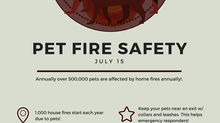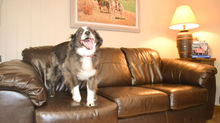Hairball Awareness Day
- briannabutler1
- Apr 29, 2016
- 2 min read

Hairballs: A disgusting, but common, problem for all cats.
The last Friday in April is dedicated to Hairball Awareness. So test your knowledge on hairballs!
What Causes Hairballs in Cats?
Hairballs develop as a result of your cat’s healthy grooming routine. As your cat frequently grooms himself, the dead and loose hair is caught on his tongue and swallowed. While the majority of this hair passes through the GI tract with no problem, some of the hair may stay in the stomach, forming a hairball. In order to get rid of this accumulation of hair, your cat will vomit. Because the hairball has to pass through the esophagus on its way out, hairballs generally appear thin and tube-like instead of spherical like the name implies. Hairballs appear more frequently in long-haired breeds, but also occur more often in cats that tend to shed more or groom themselves compulsively. It is normal for cats to develop more problems with hairballs as they age.
Symptoms of Hairballs in Cats
Common symptoms of hairballs include hacking, retching or gagging before and during the process of expelling the hairball.
If you notice the following symptoms associated with hairballs, be sure to contact your veterinarian ASAP as they could be signs of a life-threatening complication to hairballs - blockage.
Ongoing vomiting, gagging, hacking, or retching without producing a hairball
Lack of appetite
Lethargy
Constipation
Diarrhea
4 Hairball Remedies
While there is no solution to completely eliminate hairballs completely, follow these tips to help reduce the amount of hairballs your cat has to endure.
Groom regularly. By combing or brushing your cat daily, you will remove the excess fur and reduce the amount that you cat ingests! This also provides a great time for you to bond with your cat. If you are unable to commit to the short, daily grooming, consider taking your cat to a professional groomer for either a full brush out or hair cut every 2-6 months, or as needed.
Hairball Specific Diet. We always recommend a high-quality food to help prevent many health problems. There are many hairball control diets available one the market. These diets are generally high in fiber to improve the health of your cat's skin & coat. By improving the health of your pet's coat, it will help minimize the amount of shedding and also help encourage the natural passage of hairballs through the GI tract.
CatLax or other hairball laxative. We recommend CatLax, a mild laxative that is designed to help move the hairballs along your pet's digestive tract naturally.
Control stress. Stressed animals are more likely to undergo compulsive self-grooming. If you believe that your cat in undergoing compulsive grooming, try to reduce the stress - a special diet, diffuser, or positive conditioning may help your pet to enjoy other activities instead of grooming. By reducing his stress and therefore reducing the stress-induced grooming, your cat will have less hairballs.






















Comments